Crowd funding isn't a word we usually pair with self-publishing. But it is a word that's becoming more synonymous. Platforms like Kickstarter, Indiegogo and Unbound are providing more options for entrepreneurial authors who want to give more to their readers and create a different type of connection. It's the Creator Economy at play. Today, the Alliance of Independent Authors examines crowd funding for indie authors.
The Power of Crowd Funding
If you're in any doubt about whether crowd funding for indie authors is an option, then let the AskALLi team draw your attention to the biggest crowd funding campaign in history—which was for an author. Brandon Sanderson broke the previous record of $20.3m in just three days. His campaign closed at $41.7 million dollars. More, he did all this in a thirty day period, from 1st March, 2022 to 1st April, 2022. A phenomenal amount of money in an incredibly short time. There was a lot of positive and negative reaction to his record breaking feat, which ALLi News Editor, Dan Holloway and ALLi's News and Podcast Producer, Howard Lovy discussed the reactions at length in this podcast.
During the pandemic, Brandon wrote not one, but four novels. And then announced his surprise crowd funder in a YouTube video. You can see the now closed campaign here. His tiers went from $40 up to $500 and included ebooks, audiobooks, and premium hardbacks. There were also themed swag boxes available to be shipped monthly over the course of a year. The themes play to his series and books.
Whether you loved watching the Kickstarter play out or not, it's safe to say that Brandon has been training readers globally to buy direct from the author and invest in more than just $5 ebooks, something indie authors around the globe will benefit from. Something Dan, our News Editor covers in more detail here.
Crowd Funding: The Options
Crowd funding for indie authors is still a relatively new concept. So we thought we'd introduce you to a few of the platforms at your disposal.
Kickstarter is arguably one of the bigger crowd funding platforms. And while it hasn't always prioritized authors, it certainly does now. It has a publishing category and a dedicated member of staff that focuses on publishing crowdfunders. A well designed campaign, with professional graphics and a variety of tiers is important for success on Kickstarter. The major downside of Kickstarter is, if you don't hit your funding goal, you don't receive any of the cash. A considerable downside, when you consider two out of three campaigns fail. And, to add injury to insult, Kickstarter doesn’t delete failed campaign pages, so your failed crowd funder will live forever on search engines.
Indiegogo has a similar set up to Kickstarter. However, it also has different funding models available. The first is a fixed figure. This means that you have to hit or exceed that figure in order to keep the money. Flexible funding is option two. This pays you even if you don't hit your goal on—but only if you're still be able to deliver on the benefits you promised in the campaign.
Unbound is a crowd funding platform specifically for books—both fiction and nonfiction. You have to pitch and apply, but once accepted you'll get hands on help and support to promote and fund your campaign and editing services to make the book the best it can be.
Publishizer is another, lesser known but no less great, platform for crowd funding, offering an unusual set of perks for writers. Like Unbound, you need to submit a pitch for review by their team. If Publishizer thinks a 3rd party publisher would be interested in the book (based on the response you got during the campaign) then they will query on your behalf.
Patreon, CrowdRise, and GoFundMe have also been successfully used to crowdfund for authors.
Whichever platform you choose, remember to start your research long before you start your campaign. Check out the reviews for each platform and weigh up the pros and cons of each.
Your account will need to be approved ahead of time and some platforms require that you back other campaigns before starting your own.
Crowdfunding for Indie Authors: The Practicalities
How Much Should You Ask For?
In a world where authors can raise millions, how do you determine how much you should ask for in your crowdfunding campaign? Look at current, similar campaigns. What is your financial goal? What do you intend to do with that money? Your goal will dictate how much you choose to raise.
Some possible crowdfunding goals:
- To support yourself as you write your book
- To self-publish the book — or some aspect of self-publishing (editing, design, promotion)
- To go on a book tour
- To do a print or audiobook edition or a premium, special edition
- To commission an artist for special cover art
What are You Going to Offer?
You also need to be very clear about what you're offering. Every supporter should get an ebook but what else?
- Exclusive content
- Signed copies of the print editions (paperback / hardback at different price points)
- Cover art book poster signed by you
- Invitation to a launch party
- Special recognition in the book
- Bonus content
- A date with / performance by you
You are limited only by your creativity.
Crowdfunding for Indie Authors: Case Studies
Orna Ross: Make it Special

Orna Ross, Director of ALLi
Q. Why did you decide to do a crowdfunder?
I wanted to create a premium edition hardback for a book that I knew would have only limited commercial appeal. To celebrate WBYeats 150th birth centenary in 2015 (I'm a superfan!), I had the idea of doing an especially crafted replica of WB Yeats's 1897 first edition of his first book of short stories, The Secret Rose (1897), and my own novel, Her Secret Rose (2015), in a double-book special edition.
I wanted to match the blue-cloth bound, intricate gilt impress, and laid paper of the original design by Yeats friend and fellow mystic, illustrator and designer, Althea Gyles and to tell the story behind the writing of the stories.
Q. What was included in your offers? And how did you determine the tiers?
I offered a variety of rewards from £5 to £1,000, to satisfy fans at all levels. All supporters received copies of the ebook and a grateful acknowledgement of their contribution in supporting this unique literary project on my website. There were the print editions, 500 only, signed and dedicated to the buyer. There was an opportunity to attend the launch at the famous Yeats International Summer School programme in Sligo, a special night out and dinner with me and friends, at the house of Damien Brennan, President of The Yeats Society who entertained us mightily with Yeats readings. And a first edition of Yeats' original, with interior illustrations by his brother, Jack B Yeats.
Q. Do you have any advice for authors on how to source printers/distributors/artists/ fulfillment services?
Check out the ALLi Partner Directory or, if you are an ALLi member, search our partner member database, for approved services.
Q. What’s the biggest lesson you learned?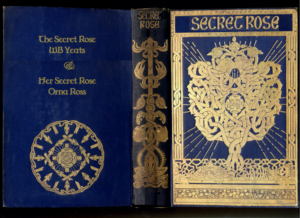
Readers will support books and authors way beyond the usual $5 for an ebook or $10 for a paperback… but authors are often slow to ask. I had to get comfortable selling my idea and the rewards in a very direct way … and that has helped me as a publisher, ever since. As well as raising money, crowdfunding test and validates your book idea, puts you in touch with fans and followers, and tests the interest of buyers. Selling your idea through a crowdfunding campaign validates your book's viability.
Q. How did you market / advertise?
Through my mailing list, by reaching out to those who had an interest WB Yeats and Maud Gonne through social media and the Yeats association. The launch events at the London Irish Centre and at Yeats House in Sligo, Ireland also helped to spread the word. If I do another crowdfunder (and I'm seriously considering making it part of my direct sales strategy), I'd use ads and other promotional tools that have come available since.
Q. Any other useful tips or tricks or resources?
Make it special, and make it a shared creative experience. Not many readers are going to be excited just by the fact that you're publishing. Creatively explore what readers of your book would most value, link the rewards to the book, and get some premium offers in there. I think what stops a lot of authors from crowdfunding is that they feel it's glorified begging, or a charity ask. Share how you feel about the book, give your readers the opportunity to join together with you in creating something splendid, something that wouldn't have been possible without their contribution.

Paddy Finn, Author and Kickstarter User
Paddy Finn: Talk to people who’ve been there and done it
Paddy Finn has built multiple companies on what he calls “unconventional hallucinogenics”, a.k.a stories. Find out more here: www.paddyfinn.com
Q. Why did you decide to do a crowdfunder?
One of my book series had just taken off, so you think I’d have doubled down on that. But I love trying out the unconventional and I saw an opportunity I just couldn’t ignore. Not many authors were using Kickstarter. I wanted to try it out as a potential way to build a new audience. It worked better than expected. It’s worth testing the path less travelled. You never know what surprises you might find.
Q. What was included in your offers? And how did you determine the tiers?
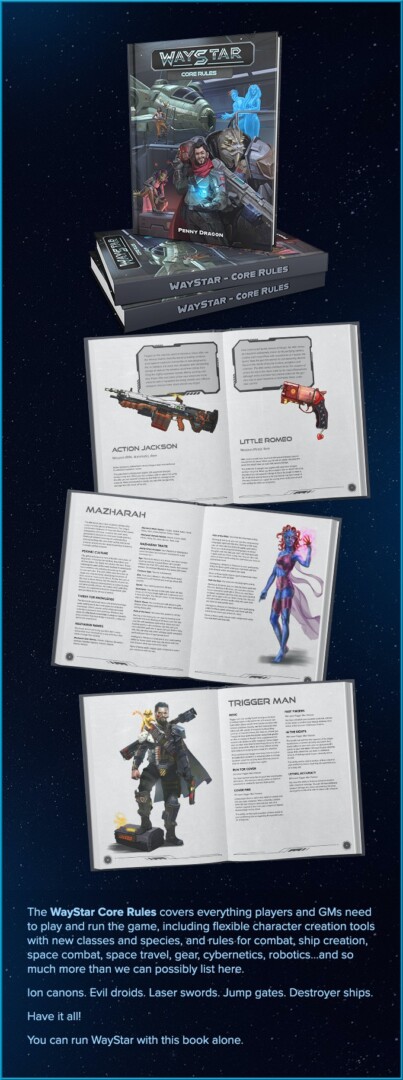 Usually we provide: Digital only, physical books, boxset, all of the above plus add-ons. Each of those pledge tiers increases in cost naturally. Check out what successful creators in your area offer. Figure out your cost of fulfilment (get quotes for creating your product and fulfilment) and model your tiers using that information. Be careful not to undercharge. Add 20% for unforeseen charges, etc. Kickstarter is a fantastic platform, but some have put themselves into financial difficulty by not running their calculations before launch. We started with a really small Kickstarter that made $4,000 and barely covered its expenses, we planned it that way, viewing it as an investment in our education on a new platform. We’ve run 7 Kickstarters since and several were 6-figure projects. But it all started with that first small Kickstarter. I often recommend folks to start small then grow from there.
Usually we provide: Digital only, physical books, boxset, all of the above plus add-ons. Each of those pledge tiers increases in cost naturally. Check out what successful creators in your area offer. Figure out your cost of fulfilment (get quotes for creating your product and fulfilment) and model your tiers using that information. Be careful not to undercharge. Add 20% for unforeseen charges, etc. Kickstarter is a fantastic platform, but some have put themselves into financial difficulty by not running their calculations before launch. We started with a really small Kickstarter that made $4,000 and barely covered its expenses, we planned it that way, viewing it as an investment in our education on a new platform. We’ve run 7 Kickstarters since and several were 6-figure projects. But it all started with that first small Kickstarter. I often recommend folks to start small then grow from there.
Q. Do you have any advice for authors on how to source printers/distributors/artists/ fulfillment services?
Eventually, there’ll be tools to make these things more accessible. For now, talk to people who’ve been there and done it. Five years ago, hardly any authors did crowd funders. These days many more authors are dipping their toes in and learning the lay of the land. They can advise who to use/not use and what pitfalls to avoid. It’s all about building relationships…something we aren’t always good at as authors, but relationships are powerful. The right relationships can mean the difference between making a few sales a week and running a multi-million dollar business. I guess it depends on your goals. My goal is to grow as big as possible so I can serve as many people as possible.
Q. What’s the biggest lesson you learned?
There are no shortcuts. That was the biggest lesson by far and learning it cost me $30,000 at a time when I had very little money. That put my business into a tailspin. We pulled out of the death spiral, but it was a close call. All because I wanted to grow faster than we were able to at the time. I even ended up writing an article titled “The Biggest Shortcut No One Is Telling You About!” Tldr: The best shortcut is not taking a shortcut. I know it’s something ambitious people hate to hear (I should know)…but take your time.
Q. How did you market / advertise?
Initially, we started building a mailing list. We launched our first campaign with only a few 100 people. But it accelerated after that. Eventually we built a relationship with Backerkit. Now they run Facebook ads campaigns for us and that has become an integral part of our growth strategy. We also sponsor many of the biggest names on YouTube in our market. Circling back to what I said before…relationships are important. The bigger my business grows, the less I focus on the day-to-day side of things and the more I work on building connections in the industry. I believe that’s an important part of being a CEO.
Q. Any other useful tips or tricks or resources?
Use Backerkit. They offer so many amazing tools. Start with their pledge manager. On your second campaign, use their Launch tool. When your audience builds, you can reach out for help with marketing. They recently launched their own crowdfunding platform which has seen stellar success. I’ll be testing them out in the next month or two. It’s great to see competitors in the market. It means things are maturing. Now is a great time to try crowdfunding while it isn’t quite as saturated as other income streams.
Clare Sager: Talking about your books sells them (gasp!)

Fantasy Romance Author, Clare Sager
Clare Sager is a lifelong fantasy reader, former English teacher, and corsetière. When she’s not writing, she can be found reading, making corsets, obsessing over the 18th century, or laughing at cats/photos of cats. She lives in Nottingham, Robin Hood country, so it’s no surprise she writes about a character who robs from the rich to give to the poor. You can find out more about her on her Instagram and website.
I had a book I wanted to re-release with changes (a second edition taking the book from fade-to-black romance with no on-page sex to a steamy romance, so significant changes). I already had a beautiful under dust jacket design, as well as a bookmark and enamel pin design. After reading Monica Leonelle and Russell Nohelty’s book on Kickstarter for authors, I felt like I had a good idea, so I decided to go ahead and do one as an experiment.
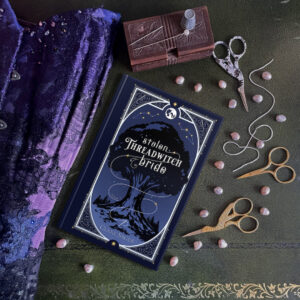
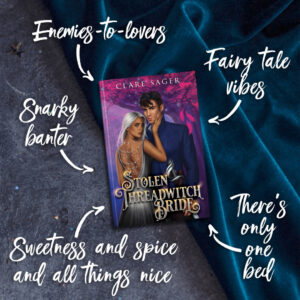 Q. What was included in your offers? And how did you determine the tiers?
Q. What was included in your offers? And how did you determine the tiers?
I had several tiers, some purely digital, others that included hand-finished special editions. My most popular tiers were the hardback tier (this also had some digital items, including some that were exclusive to the campaign), and the special edition hardback with merch. To work out my tiers, I wrote a list of all the different reward items (digital and physical) that I could think of, together with how much they’d cost me to source and how much I could sell them for. I then looked at other author campaigns, successful and not, and used those to help me decide on how much my tiers should be and what I could group together in each tier. A lot of it also came from knowing my readers — I’m involved in the fantasy romance community, so I know what readers of that genre like and what gets them excited.
Q. Do you have any advice for authors on how to source printers/distributors/artists/ fulfillment services?
Sourcing manufacturers and artists has been a medium-term activity for me. For artists, I’d recommend keeping an eye out on Instagram and Twitter and following hashtags that relate to your genre. Also speak to author friends and share artists you find and let them know you’re liking for artists to work with. This is how I found several artists I’ve worked with. For manufacturers of merch, you want to consider whether you’ll be dropshipping or getting it sent to you and then you doing the packing and shipping. There are pros and cons to both, so it depends on your priorities. Once you’ve decided which, have a look on Google and ask for recommendations, then compare what they offer and the costs. For me, I wanted to ship myself and using a company I’d used before who were relatively local was another factor.
Q. What’s the biggest lesson you learned from doing the crowdfunder?
My biggest lesson learned was one that might seem obvious to some but that doesn’t come naturally to me (and I think a lot of other authors might be in the same boat), but talking about your books sells them (gasp!). I felt really uncomfortable and like I was repeating myself, but every time I posted on social media or explained a different element of the hardback, I had more questions and more backers. Just because you’ve spoken about a book or project, doesn’t mean you can’t talk about it again. There will be folk who missed your previous post (or posts), so mention that backlist title you released last year and remind readers that they can get your hardback or merch, even if you shared those things before.
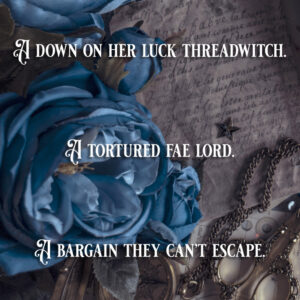
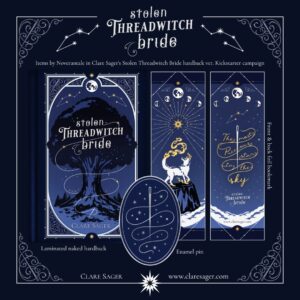 Q. How did you market / advertise your campaign?
Q. How did you market / advertise your campaign?
I primarily promoted my campaign through my newsletter and social media channels, including my personal Facebook account. As this didn’t affect the algorithms on the retailers, I didn’t need to worry about sending the “wrong” readers to buy my book, so this was a good opportunity for my friends and family to support me. I also let my newsletter self-select whether they were interested in the Kickstarter, so if they clicked on a certain link, they would get more emails about the project, and that way I avoided flooding subscribers who were less interested.
Q. Any other useful tips or tricks or resources you think Indies should know?
I highly recommend Monica Leonelle and Russell Nohelty’s book on Kickstarter for authors and the Facebook groups Kickstarter for Authors and (Experienced) Kickstarter for Authors, which is for authors who’ve sent at least one campaign live. I also want to finish by saying you’ll probably be pleasantly surprised by how much your superfans want to support you. If you’re only selling ebooks, they can only support you £5 when you release a new book. With a Kickstarter, they have the opportunity to send £25, £50, or even £100 or more your way. No one’s forcing them to, but you will have readers who want to. Give them that chance. My graphics were a big factor in the success of the KS – they look professional and appealing and have a continuity in branding that adds to that sense. When making them, I also chose image sizes and types that would double up as Amazon A+ content, saving me time in future.

Sara Rosett
Sara Rosett: Recognise the importance of good graphics and stretch goals
Sara Rosett is the USA Today bestselling author of 30 cozy and historical mysteries as well as books and courses for writers including How to Write a Series and How to Outline a Cozy Mystery. She hosts two podcasts: Mystery Books Podcast for readers and the Wish I’d Known Then For Writers Podcast with Jami Albright.
You can find out more about her on her website, Instagram and Twitter.
I viewed it as an experiment, a way to try direct sales without setting up my own store with Shopify. My main goal was to test my ideas for unique, premium-priced products and see if my readers were interested in them.
I had several types of tiers:
- digital only (printables, ebooks, and audio)
- physical products (books and other printed products)
- experience (online book club options)
- one-of-a-kind (name customization in a short story—i.e. replace the sleuth’s name with your name or name of your choice)
I wanted to have a range of prices from low to mid three figures. I researched other successful Kickstarter projects and then I took what I’d learned and tried to apply it to my readers. For instance, the lowest tier is often digital wallpaper, but I didn’t think that would appeal to my readers, so I offered printable bookmarks instead. For one of the higher priced tiers I offered a “Book Club Pack” with 10 ebooks of the special edition.

Join the crowdfunder groups on Facebook and ask who they recommend.
My readers love beautiful print books and are willing to pay a premium price. Many of them also enjoyed the group/social aspect of the project and were excited when we reached stretch goals. I hadn’t experienced a “group project” type of atmosphere when it came to my books!
Q. How did you market / advertise your campaign?
- Shared extensively about it in my newsletter. I emailed more frequently than I ever have in the past.
- Recruited other authors to give away books as bonus perks (3-4 authors each week) and they also shared about it, which helped get the word out beyond my own network of readers
- Backer swaps with other authors who had a crowdfunder running at the same time
- Social media posts – I even made some videos, which I never do!
- Posts on my own blog, which is connected to Amazon and Goodreads, so the posts went live there as well
- Recorded a short pre-roll advertisement for Mystery Books Podcast
- Mentioned it on Wish I’d Known Then podcast
- Graphics – oh my goodness, you’re going to need graphics! So many more than I realized. The campaign graphic is incredibly important. I had authors who had experience running Kickstarter campaigns look at mine and give me feedback, which was basically “no, this won’t work well” for my first attempt. It took three or four tries before I got the “thumbs up.”
- Use Kickstarter’s Pre-Launch Page to gather followers and gauge interest. I had mine up for about 3-4 weeks.
- If your readers don’t know what Kickstarter is, take time to explain it. I did this during the Pre-Launch phase, mostly by sharing other cozy mystery campaigns that might interest my readers. I also explained how the platform worked and why I was using it.
- Stretch Goals – I was so overwhelmed with setting up the Tiers, the Story section, and the Add-ons that I couldn’t even think about Stretch Goals. I didn’t have any Stretch Goals mapped out, only a few vague ideas. When the campaign went live and funded quickly, it became clear that I needed to come up with some Stretch Goals to keep the interest going for 16 more days. I didn’t reveal them all at once. Once we hit a goal, I revealed a new goal.
- Join a group or take a class. There are so many ways to optimize and you want to set yourself up for success. I took a course and I’m so glad I did.
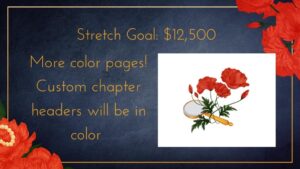





Do you really think Publishizer is worth recommending here?
They approached me years ago, and wouldn’t let go. They seem very much like a scam to me, a vanity press that tries to convince you they are crowdfunding because they really have interest in your book, when all they actually have interest in is getting a good share of the crowdfunding cash that comes in based upon it.
They accepted me based on a totally fictitious and bad “pitch” I wrote up in less than half an hour, on a book that didn’t exist.
Other reviews I’ve read of them say that they submit the work to obscure or fictitious publishers once you are accepted…
It all seems to be about the crowdfunding cash they are raking in off of all these aspiring authors with their hard fought novels…